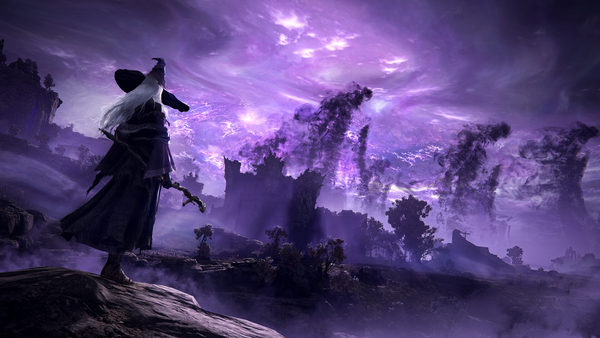Advertisement
Popular Now
Introduction
World of Warcraft (WoW), developed by Blizzard Entertainment, is one of the most popular MMORPGs in gaming history. One of the most complex and controversial aspects of the game is its in-game economy, particularly the issue of inflation. As players accumulate more wealth, the value of gold tends to decrease, making it difficult for newer or casual players to keep up. A central feature that has been implemented to combat this is the concept of “gold sinks.” This article will delve deeply into the problem of inflation and explore how gold sinks impact the in-game economy, including the unintended consequences of these mechanics.
The Early WoW Economy: Simplicity at Its Best
In the early days of World of Warcraft, the in-game economy was relatively simple. Players earned gold primarily by completing quests, selling loot, and farming materials. The prices for goods and services were largely consistent, with fewer mechanisms available for massive wealth generation. Gold had a tangible value because players didn’t have easy access to excessive amounts. The slow acquisition of wealth meant that prices for items like mounts and consumables stayed stable. As a result, newer players didn’t face a daunting financial barrier when entering the game.The introduction of auction houses
The auction house played a crucial role in the economy's development, offering a centralized marketplace where players could buy and sell items. However, the simplicity of the system meant there was little risk of inflation, as the market largely regulated itself with supply and demand dynamics.The Rise of Player Wealth and Economic Imbalance
As WoW evolved, so did its economy. The release of expansions like The Burning Crusade and Wrath of the Lich King introduced a surge of content, increasing opportunities for players to earn gold through raiding, dungeons, and daily quests. The introduction of more valuable loot and rare materials fueled the drive to accumulate wealth. Higher-level players, particularly those engaged in end-game activities, started generating significant amounts of gold. Meanwhile, newer players were often left behind, struggling to compete in a market where prices were gradually rising due to the influx of wealth.Inflation starts to become visible
As the wealth gap widened, inflation began to take hold. The value of gold decreased, and items that were once affordable for most players became exorbitantly expensive. The community started noticing this trend, and Blizzard took its first steps to address the issue.The Role of Gold Sinks in WoW
Gold sinks are game mechanics designed to remove gold from the economy, theoretically balancing the economy by preventing excessive inflation. Blizzard has implemented numerous gold sinks in WoW over the years, such as mounts, repairs, vendor items, and high-cost vanity items. These systems aim to ensure that high-level players, who can generate substantial gold, have reasons to spend it. For a while, gold sinks were successful in keeping inflation in check, as players actively spent their wealth on luxury items or essential services.Examples of gold sinks
Epic flying mounts costing 5,000 gold in The Burning Crusade Repair costs for high-level gear after raiding or dungeons Vanity items, such as the 1 million gold Brutosaur mount in Battle for AzerothThe Introduction of Token Systems
In 2015, Blizzard introduced the WoW Token, allowing players to purchase game time with gold. Players could buy the token with real money and sell it on the auction house for gold, creating a link between real-world currency and in-game wealth. While the token system added a layer of convenience for players, it also contributed to inflation. With more players able to convert real money into in-game wealth, the gold supply skyrocketed. This allowed some players to bypass traditional gold sinks, reducing their effectiveness.The impact on casual players
Casual players, who may not engage in gold-generating activities as frequently, found it even more difficult to keep up with rising prices, as wealthier players could now convert real-world money into massive gold reserves.Inflation: A Persistent Problem
Despite the implementation of gold sinks and the WoW Token system, inflation remains a persistent issue in World of Warcraft. As expansions continued to release, Blizzard introduced new ways for players to earn gold at an accelerated pace. Daily and weekly quests, world events, and raid farming all contributed to the growing wealth of players. The primary issue is that gold sinks, while present, have not scaled appropriately with the exponential increase in wealth generation. While mounts and repairs still drain some gold, they are not enough to offset the flood of currency circulating in the economy.The ineffective balance between gold sinks and income generation
The wealth disparity between veteran players and newer players has only widened, leading to calls for more aggressive inflation management.The Auction House and Hyperinflation
The auction house, which once regulated the economy, has now become a primary contributor to hyperinflation. Players who control specific markets can manipulate prices by hoarding rare materials or driving up prices for essential goods. For instance, materials required for high-end crafting can skyrocket in price, making it difficult for casual players to afford key items for raiding or crafting professions. This leads to a situation where the richest players control the economy, making it less accessible to everyone else.Market manipulation strategies
Monopolizing rare crafting materials to artificially inflate prices Flipping underpriced items for profit, further distorting the market Using bots or third-party software to automate and dominate specific marketsBlizzard’s Attempts at Intervention
Over the years, Blizzard has introduced various measures to combat inflation and restore balance to the game’s economy. One of the most significant was the cap on auction house listings, which aimed to prevent players from monopolizing markets with infinite listings of the same items. Additionally, Blizzard increased the cost of some gold sinks, like mounts and vendor items, in hopes of scaling the economic drain to match player wealth. However, these changes were met with mixed reactions, as many players felt they targeted casual players more than the wealthiest ones.Price controls and caps
While Blizzard has implemented price caps for certain items, the underlying issue remains: gold sinks do not drain enough wealth from high-end players, leaving inflation unchecked.Effects on New and Returning Players
For new and returning players, the current state of the economy can be daunting. Many players log in to find that the prices for essential items—whether for leveling professions, purchasing gear, or preparing for end-game content—are far higher than they anticipated. This can discourage players from fully engaging with the game’s economy. The inflation of consumables and crafting materials, in particular, creates a significant barrier for players trying to catch up with others who have been playing consistently over the years. The cost of participating in raids, buying potions, or gearing up can be prohibitive, leading some players to either buy WoW Tokens or give up entirely.
Long-Term Economic Consequences
The persistent issue of inflation has far-reaching effects on the World of Warcraft player base. As inflation continues to grow unchecked, the gap between the game’s wealthiest players and the average or casual player becomes more pronounced. This can lead to a sense of frustration among players who feel locked out of certain parts of the game due to the inaccessibility of resources. The economy has also pushed some players to engage in real-world trading, even though it violates the game’s terms of service. The temptation to buy gold from third-party sellers grows as legitimate means of wealth accumulation become increasingly difficult.Potential Solutions to Combat Inflation
To combat the issue of inflation, Blizzard could consider introducing more aggressive gold sinks that target high-end players without alienating casuals. One potential solution would be scaling gold sinks based on player wealth, ensuring that those with larger reserves contribute more to the economy’s regulation. Another option could be rebalancing the WoW Token system to ensure it does not contribute disproportionately to inflation. By regulating the influx of real-world money into the economy, Blizzard could prevent gold from becoming so abundant that it loses all value.Proposed gold sink strategies:
Introduce new, high-cost vanity items that appeal to veteran players Scale repair costs and other expenses based on player wealth Implement event-based gold drains, such as auctions or rare item vendors
















